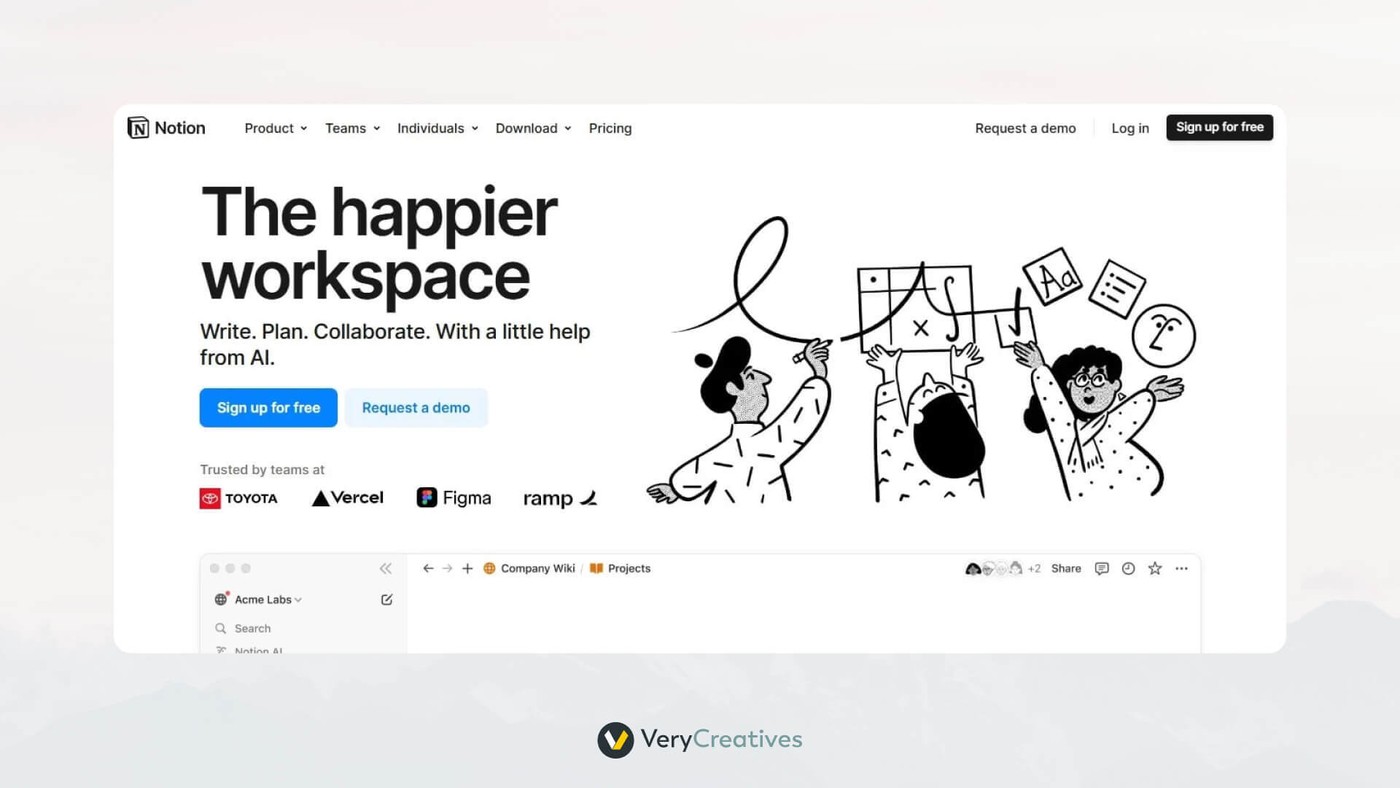Thousands of new apps and software startups launch every month. Yet only a small percentage gain significant traction.
What separates successful digital products from those that fade into obscurity?
Often, it’s not just about features or technology—it’s about having a clear, compelling position in the market.
For startup founders and product teams, positioning is particularly crucial. When you have mere seconds to capture a potential user’s attention, your product’s position needs to be instantly clear and compelling.
Whether you’re building a SaaS platform, mobile app, or digital service, a well-crafted positioning statement serves as your north star for product development, marketing, and growth.
The challenge isn’t just explaining what your product does—it’s articulating why it matters and how it’s different from every other solution in the market.
This is where a positioning statement becomes essential. It’s the foundation that guides everything from your user interface design to your marketing message, helping ensure your digital product resonates with its intended audience.
What is a positioning statement?
A positioning statement serves as the strategic foundation for your digital product’s development and marketing efforts. It’s a clear, concise articulation of what your product does, who it’s for, and why it’s uniquely valuable in today’s digital landscape.
For digital products, your positioning statement influences everything from your user interface and feature prioritization to your marketing message and customer support approach.
It helps create a coherent product experience that resonates with users from their first interaction with your landing page through their entire user journey.
Think of your positioning statement as your product’s DNA—it should be evident in every feature you build, every piece of content you create, and every user interaction you design.
New competitors emerge daily, a strong positioning statement helps maintain focus and guides decision-making across your entire team.
Why is a positioning statement critical for digital products?
In the digital product space, positioning becomes even more crucial as the barrier to entry continues to lower.
According to research, brands with clear differentiation see 20–30% higher customer retention, and this effect is particularly pronounced in the digital sector where users can easily switch between alternatives.
A well-crafted positioning statement does three critical things for digital products:
First, it guides product development decisions.
When your team debates which features to prioritize or how to design user flows, your positioning statement provides clear direction.
If you’re positioning your product as “the simplest way to manage remote teams,” every feature decision should support that simplicity-first approach.
Second, it helps cut through the noise in crowded app stores and SaaS directories.
With millions of apps available, users need to understand why your solution is different quickly.
A clear positioning statement translates into compelling app store descriptions, landing pages, and marketing messages that capture attention.
Third, it aligns your entire organization —from developers to customer support—around a common understanding of what makes your product unique.
This alignment is especially crucial for digital products where user experience needs to be consistent across all touchpoints.
Key components of a digital product positioning statement
Let’s explore the four essential components of a positioning statement through the lens of digital products.
We’ll use Figma’s positioning as our primary example: “Figma is the first professional-grade UI design tool created specifically for teams. Design, prototype, and gather feedback all in one place with Figma.”
This concise statement has become a cornerstone of Figma’s meteoric rise in the design tools market, helping them achieve widespread adoption among design teams worldwide.
Let’s break down why it works so well and how you can apply these principles to your own digital product.
Target audience definition
In digital products, your target audience isn’t just about demographics—it’s about specific use cases and user roles.
Figma’s statement immediately identifies their audience as “professional” design teams, not individual designers or hobbyists.
When defining your target audience, consider the specific problems they face in their daily workflow.
If you’re building a project management tool, are you targeting technical project managers in software companies, or creative project managers in marketing agencies?
These distinctions will shape everything from your feature set to your user interface.
The key is to be specific enough to resonate deeply with your core users, while leaving room for natural expansion.
Notice how Figma’s focus on “teams” opened the door for expansion into enterprise customers, while maintaining their core appeal to collaborative design workflows.
Value proposition
Your value proposition in the digital product space needs to address a specific pain point or opportunity that existing solutions haven’t adequately solved.
Figma’s value proposition is embedded in the phrase “design, prototype, and gather feedback all in one place.”
This directly addresses the fragmented workflow that designers previously faced when using multiple tools for different parts of their process.
When crafting your value proposition, consider the current state of your market.
What are users cobbling together multiple tools to accomplish?
What friction points exist in their current workflow?
Notion positioned itself as the solution to information scattered across different apps, while Linear tackled the complexity and sluggishness of existing project management tools.
The key is to focus on the outcome users want, not just your feature set.
Users don’t want “real-time collaboration features”—they want to “work seamlessly with their team without version control nightmares.”
Frame your value proposition around these desired outcomes.
Competitive advantage
In the digital product landscape, competitive advantage often comes from a combination of technical innovation and user experience design.
Figma’s competitive advantage lies in being “created specifically for teams,” which they backed up with technical innovations like real-time collaboration and browser-based accessibility.
Your competitive advantage should be something that’s difficult for competitors to replicate quickly.
This could be:
- Technical innovation (like Vercel’s edge computing infrastructure)
- Network effects (like Webflow’s template marketplace)
- Novel user experience (like Stripe’s developer-first approach)
- Unique integration capabilities (like Zapier’s automation platform)
The key is to identify an advantage that’s both meaningful to users and sustainable over time. This often means building something that gets better with scale or usage, creating a virtuous cycle that competitors can’t easily match.
Brand experience
Branding goes far beyond logos and colors—it’s about creating a consistent experience across every user touchpoint.
Your brand experience should reflect your positioning in everything from your user interface to your API documentation.
Consider how Stripe has built its brand around developer experience.
Their positioning as the “developer-first payment platform” is reflected in their clean documentation, robust API design, and even their command-line interface. Every interaction reinforces their brand promise of making complex payment infrastructure simple and elegant.
For digital products, strong brand experience means:
- Consistent interaction patterns that reflect your positioning (like Linear’s focus on speed)
- User interface design that embodies your brand values (like Notion’s minimalist, flexible approach)
- Technical documentation and support that align with your target audience’s needs
- A cohesive voice across all communication channels, from error messages to marketing emails
The key is ensuring that your product experience delivers on the promises made in your positioning statement. If you position yourself as “the fastest way to X,” your product needs to feel fast at every interaction point.
Tips for crafting your positioning statement
Start with user research
Before writing a single word of your positioning statement, invest time in understanding your users’ workflows and pain points.
At VeryCreatives, we’ve found through our work with numerous startups that successful digital products are built on deep user insights.
In our guide on how to identify target market for startups, we detail the research methods that consistently yield the best results.
Conduct user interviews focused on understanding:
- Current tools and workflows your target users employ
- Specific frustrations with existing solutions
- The language they use to describe their problems
- Their decision-making process when evaluating new tools
This research will help you identify positioning opportunities that resonate with real user needs rather than assumed ones.
Map the competitors
Today’s competitor might be tomorrow’s integration partner, and entirely new categories of software emerge regularly.
Start by mapping three key areas:
- Direct competitors (products solving the same problem)
- Adjacent solutions (products your users might use alongside yours)
- Alternative approaches (including non-digital solutions)
When Notion entered the market, they mapped not just wiki tools like Confluence, but also:
- Document editors like Google Docs
- Project management tools like Trello
- Database tools like Airtable
- Traditional note-taking methods
This comprehensive understanding helped them position themselves as a flexible “all-in-one workspace” rather than just another documentation tool.
They identified a gap in the market: the need for a tool that could adapt to different workflows while maintaining simplicity.
The key is to look beyond feature comparisons and understand the core jobs users are trying to accomplish.
Create your positioning framework
While traditional positioning formulas can be helpful starting points, digital products often need a more nuanced approach.
Here’s a framework specifically adapted for digital products:
“For [specific user role or segment] who [specific pain point or job to be done], [your product] is a [category definition] that [key benefit]. Unlike [main alternative], we [key differentiator] because [proof point].”
Let’s see this in action with Vercel’s positioning:
”For development teams who need to deploy web applications, Vercel is a deployment and collaboration platform that delivers exceptional frontend experiences. Unlike traditional hosting platforms, we optimize for performance and developer experience because we’ve built our infrastructure specifically for modern web frameworks.”
The key is to be specific about both the user and the problem you’re solving, while clearly articulating why your approach is better suited to solving it.
Validate through user testing
Your positioning should be tested and validated just like any other product feature. This means going beyond traditional market research to gather actual usage data and user feedback.
Start with these validation methods:
- A/B test different positioning statements on your landing page
- Track user activation rates against different value propositions
- Monitor user behavior to ensure it aligns with your positioned use case
- Collect qualitative feedback through user interviews
When Airtable was developing their positioning, they discovered through user testing that their initial position as a “flexible database” wasn’t resonating with non-technical users.
By shifting their positioning to “part spreadsheet, part database,” they made their product more approachable while maintaining its power-user appeal.
Align product development with positioning
Your positioning statement should directly influence your product roadmap and feature prioritization.
If you position yourself as “the fastest way to [solve problem X],” every feature decision should be evaluated against this speed-first promise.
Linear, positioned as “the issue tracking tool you’ll enjoy using,” ensures every feature supports their core promise of speed and efficiency:
- They measure and optimize every interaction for performance
- Their keyboard shortcuts are designed for rapid navigation
- Even their infrastructure choices are made with speed in mind
This alignment between positioning and product development creates a coherent experience that reinforces your market position.
Iterate based on market response
Digital products exist in a rapidly evolving marketplace, so your positioning should be treated as a living document that evolves with user needs and market conditions.
Monitor key metrics that indicate positioning effectiveness:
- User activation rates
- Time-to-value for new users
- Feature adoption patterns
- Customer feedback and support tickets
- Competitive win/loss analysis
3 innovative digital product positioning examples
Linear

Linear is a powerful project and issue tracking system that has transformed how software teams work since its launch in 2019.
The platform goes beyond traditional project management, streamlining workflows across the entire product development process.
Positioning statement: “A powerful project and issue tracking system that streamlines workflows across the entire product development process.”
Why it’s effective
Linear’s positioning brilliantly transcends the traditional “tool” narrative by presenting itself as a better way to build software.
Rather than just competing on features, they focus on transforming the entire development workflow.
This positions them as a strategic solution rather than just another task management tool, setting them apart from conventional project management systems that often slow teams down.
Their emphasis on streamlined workflows and the entire development process speaks directly to the needs of high-performance software teams who need speed and efficiency.
Notion

Notion is a connected workspace platform that has redefined how teams manage their wiki, docs, and projects since 2016.
By consolidating multiple tools into one customizable platform, Notion has created a new category of productivity software that adapts to both personal and professional needs.
Positioning statement: “Your connected workspace for wiki, docs & projects”
Why it’s effective
Notion’s positioning is masterful in how it addresses a fundamental workplace challenge: the fragmentation of information across multiple tools.
Instead of positioning themselves as just another note-taking or project management tool, they emphasize connectivity and integration.
Their focus on being a “connected workspace” speaks directly to teams frustrated with switching between different apps for different tasks.
This positioning has allowed them to create their own category, transcending traditional tool classifications while promising a more unified and efficient way of working.
Figma

Figma has revolutionized the design industry by creating a collaborative design platform that enables real-time teamwork.
Since its launch in 2016, Figma has transformed design from a siloed activity into a collaborative process, making design accessible to all team members and reshaping how companies approach design collectively.
Positioning statement: “A collaborative design platform where teams create, test, and ship better designs together”
Why it’s effective:
Figma’s positioning brilliantly addresses a fundamental shift in how design work happens.
Rather than focusing solely on design tools and features, they emphasize the collaborative nature of modern design work.
This positioning helped them differentiate from traditional design tools that were built for individual designers working in isolation.
By emphasizing collaboration and accessibility, Figma has positioned itself as more than just a design tool—it’s a platform that transforms how entire organizations approach design work.
This resonates particularly well with companies looking to break down silos between design teams and other departments.
Turn your positioning into a product success
A well-crafted positioning statement isn’t just a marketing exercise—it’s the foundation of successful digital product development.
It guides everything from feature prioritization to user interface decisions, ensuring your product delivers a coherent, compelling experience that resonates with your target users.
Ready to develop a digital product that truly stands out in the market?
Schedule a call with VeryCreatives. We’ll help you not just position your product effectively, but build it in a way that delivers on that positioning promise.